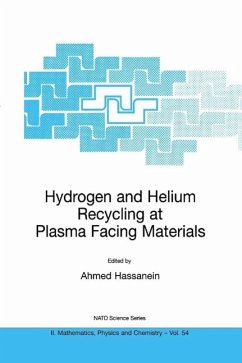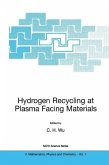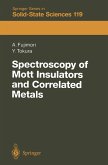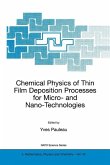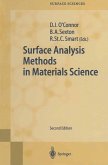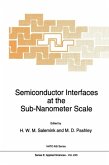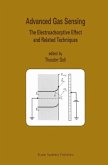Hydrogen and Helium Recycling at Plasma Facing Materials (eBook, PDF)
Redaktion: Hassanein, Ahmed
72,95 €
72,95 €
inkl. MwSt.
Sofort per Download lieferbar

36 °P sammeln
72,95 €
Als Download kaufen

72,95 €
inkl. MwSt.
Sofort per Download lieferbar

36 °P sammeln
Jetzt verschenken
Alle Infos zum eBook verschenken
72,95 €
inkl. MwSt.
Sofort per Download lieferbar
Alle Infos zum eBook verschenken

36 °P sammeln
Hydrogen and Helium Recycling at Plasma Facing Materials (eBook, PDF)
Redaktion: Hassanein, Ahmed
- Format: PDF
- Merkliste
- Auf die Merkliste
- Bewerten Bewerten
- Teilen
- Produkt teilen
- Produkterinnerung
- Produkterinnerung

Bitte loggen Sie sich zunächst in Ihr Kundenkonto ein oder registrieren Sie sich bei
bücher.de, um das eBook-Abo tolino select nutzen zu können.
Hier können Sie sich einloggen
Hier können Sie sich einloggen
Sie sind bereits eingeloggt. Klicken Sie auf 2. tolino select Abo, um fortzufahren.

Bitte loggen Sie sich zunächst in Ihr Kundenkonto ein oder registrieren Sie sich bei bücher.de, um das eBook-Abo tolino select nutzen zu können.
A compendium representing the current state of the art in the modelling, simulation and physics of the interaction of hydrogen and helium with plasma facing materials in fusion reactors. This is the topic that will determine the success of the production of energy by future Tokamak reactors and it is here discussed by the world's experts. Topics covered are recycling of hydrogen isotopes; wall fuelling and wall pumping; active control of hydrogen recycling; hydrogen and helium behaviour in solids and liquid metals; and databases for recycling.
- Geräte: PC
- ohne Kopierschutz
- eBook Hilfe
- Größe: 19.89MB
Andere Kunden interessierten sich auch für
![Hydrogen Recycling at Plasma Facing Materials (eBook, PDF) Hydrogen Recycling at Plasma Facing Materials (eBook, PDF)]() Hydrogen Recycling at Plasma Facing Materials (eBook, PDF)72,95 €
Hydrogen Recycling at Plasma Facing Materials (eBook, PDF)72,95 €![Computer Simulations in Condensed Matter: From Materials to Chemical Biology. Volume 1 (eBook, PDF) Computer Simulations in Condensed Matter: From Materials to Chemical Biology. Volume 1 (eBook, PDF)]() Computer Simulations in Condensed Matter: From Materials to Chemical Biology. Volume 1 (eBook, PDF)40,95 €
Computer Simulations in Condensed Matter: From Materials to Chemical Biology. Volume 1 (eBook, PDF)40,95 €![Spectroscopy of Mott Insulators and Correlated Metals (eBook, PDF) Spectroscopy of Mott Insulators and Correlated Metals (eBook, PDF)]() Atsushi FujimoriSpectroscopy of Mott Insulators and Correlated Metals (eBook, PDF)72,95 €
Atsushi FujimoriSpectroscopy of Mott Insulators and Correlated Metals (eBook, PDF)72,95 €![Chemical Physics of Thin Film Deposition Processes for Micro- and Nano-Technologies (eBook, PDF) Chemical Physics of Thin Film Deposition Processes for Micro- and Nano-Technologies (eBook, PDF)]() Chemical Physics of Thin Film Deposition Processes for Micro- and Nano-Technologies (eBook, PDF)72,95 €
Chemical Physics of Thin Film Deposition Processes for Micro- and Nano-Technologies (eBook, PDF)72,95 €![Surface Analysis Methods in Materials Science (eBook, PDF) Surface Analysis Methods in Materials Science (eBook, PDF)]() Surface Analysis Methods in Materials Science (eBook, PDF)40,95 €
Surface Analysis Methods in Materials Science (eBook, PDF)40,95 €![Semiconductor Interfaces at the Sub-Nanometer Scale (eBook, PDF) Semiconductor Interfaces at the Sub-Nanometer Scale (eBook, PDF)]() Semiconductor Interfaces at the Sub-Nanometer Scale (eBook, PDF)160,95 €
Semiconductor Interfaces at the Sub-Nanometer Scale (eBook, PDF)160,95 €![Advanced Gas Sensing (eBook, PDF) Advanced Gas Sensing (eBook, PDF)]() Advanced Gas Sensing (eBook, PDF)72,95 €
Advanced Gas Sensing (eBook, PDF)72,95 €-
-
-
A compendium representing the current state of the art in the modelling, simulation and physics of the interaction of hydrogen and helium with plasma facing materials in fusion reactors. This is the topic that will determine the success of the production of energy by future Tokamak reactors and it is here discussed by the world's experts. Topics covered are recycling of hydrogen isotopes; wall fuelling and wall pumping; active control of hydrogen recycling; hydrogen and helium behaviour in solids and liquid metals; and databases for recycling.
Dieser Download kann aus rechtlichen Gründen nur mit Rechnungsadresse in A, B, BG, CY, CZ, D, DK, EW, E, FIN, F, GR, HR, H, IRL, I, LT, L, LR, M, NL, PL, P, R, S, SLO, SK ausgeliefert werden.
Produktdetails
- Produktdetails
- Verlag: Springer Netherlands
- Seitenzahl: 235
- Erscheinungstermin: 6. Dezember 2012
- Englisch
- ISBN-13: 9789401004442
- Artikelnr.: 44182107
- Verlag: Springer Netherlands
- Seitenzahl: 235
- Erscheinungstermin: 6. Dezember 2012
- Englisch
- ISBN-13: 9789401004442
- Artikelnr.: 44182107
- Herstellerkennzeichnung Die Herstellerinformationen sind derzeit nicht verfügbar.
Hydrogen Recycling Studies in Tokamaks and Other Facilities.- 1. Hydrogen Isotopes Retention in Fusion Reactor Plasma-facing Materials: An Abbreviated Review.- 2. Trapping Effect in Hydrogen Retention in Metals.- 3. Recent Progress in Tritium Codeposition Modeling.- 4. The Effect of Deuterium Ion Bombardment on the Optical Properties of Beryllium Mirrors.- 5. Hot Liner Divertor Concept Analysis of Dust Formation and Locations.- Hydrogen Sputtering, Retention, Codeposition in Graphite.- 6. Hydrogen Isotope Retention Analysis for Tokamak Plasma-facing Materials.- 7. Surface Microrelief Influence on Hydrogen Interaction with Materials.- Hydrogen Recycling in Liquid Metals.- 8. Deuterium Treatment Effects on Lithium and TiN-Lithium Sputtering in Solid and Liquid Phase.- 9. Helium Entrapment in Liquid Metal Plasma-facing Surfaces in Tokamak Fusion Reactors.- Fundamental Permeation Studies I.- 10. A Model for the Steady State Plasma- and Gas-driven Hydrogen Isotope Permeation through Multi-layer Metal.- 11. Effect of Hydrogen Sorption on Surface Morphology of Pyrolytic Graphite.- Fundamental Permeation Studies II.- 12. General Model of Hydrogen Transport through Solid Membranes.- 13. Influence of Hydrogen and Helium on Radiation Damage of Structural Materials.- Hydrogen Recycling in Tungsten, Niobium, and Nickel.- 14. Deuterium Retention in Tungsten and Tungsten Carbides Irradiated with D Ions.- 15. An Interpretation of the Retention of Low Energy Deuterium Ions in Tungsten.- General Hydrogen and Helium Issues and Other Metals.- 16. Hydrogen Interaction with TiN Films.- 17. Bimetallic Diffusion Membranes: Possible Use for Active Hydrogen Recycling Control.- 18. Surface Evolution of Nickel under He and H Ion Irradiation by means of Kelvin Probe.- Measurements and Control of Hydrogen Recycling I.- 19. Development of an Innovative Carbon-based Ceramic Material; Application in High Temperature, Neutron and Hydrogen Environment.- 20. Nonmonotone Temperature Dependence of Plasma Driven Permeation through Nb Membrane.- Measurements and Control of Hydrogen Recycling II.- 21. Usage of Hydrogen-saturated Getter for Sputtering Protection of Construction Elements in Vacuum-plasma Installations.- 22. Laser Induced Breakdown Spectroscopy Technique for In-situ Dust Detecting in a Next-step Tokamak.- Authors.
Hydrogen Recycling Studies in Tokamaks and Other Facilities.- 1. Hydrogen Isotopes Retention in Fusion Reactor Plasma-facing Materials: An Abbreviated Review.- 2. Trapping Effect in Hydrogen Retention in Metals.- 3. Recent Progress in Tritium Codeposition Modeling.- 4. The Effect of Deuterium Ion Bombardment on the Optical Properties of Beryllium Mirrors.- 5. Hot Liner Divertor Concept Analysis of Dust Formation and Locations.- Hydrogen Sputtering, Retention, Codeposition in Graphite.- 6. Hydrogen Isotope Retention Analysis for Tokamak Plasma-facing Materials.- 7. Surface Microrelief Influence on Hydrogen Interaction with Materials.- Hydrogen Recycling in Liquid Metals.- 8. Deuterium Treatment Effects on Lithium and TiN-Lithium Sputtering in Solid and Liquid Phase.- 9. Helium Entrapment in Liquid Metal Plasma-facing Surfaces in Tokamak Fusion Reactors.- Fundamental Permeation Studies I.- 10. A Model for the Steady State Plasma- and Gas-driven Hydrogen Isotope Permeation through Multi-layer Metal.- 11. Effect of Hydrogen Sorption on Surface Morphology of Pyrolytic Graphite.- Fundamental Permeation Studies II.- 12. General Model of Hydrogen Transport through Solid Membranes.- 13. Influence of Hydrogen and Helium on Radiation Damage of Structural Materials.- Hydrogen Recycling in Tungsten, Niobium, and Nickel.- 14. Deuterium Retention in Tungsten and Tungsten Carbides Irradiated with D Ions.- 15. An Interpretation of the Retention of Low Energy Deuterium Ions in Tungsten.- General Hydrogen and Helium Issues and Other Metals.- 16. Hydrogen Interaction with TiN Films.- 17. Bimetallic Diffusion Membranes: Possible Use for Active Hydrogen Recycling Control.- 18. Surface Evolution of Nickel under He and H Ion Irradiation by means of Kelvin Probe.- Measurements and Control of Hydrogen Recycling I.- 19. Development of an Innovative Carbon-based Ceramic Material; Application in High Temperature, Neutron and Hydrogen Environment.- 20. Nonmonotone Temperature Dependence of Plasma Driven Permeation through Nb Membrane.- Measurements and Control of Hydrogen Recycling II.- 21. Usage of Hydrogen-saturated Getter for Sputtering Protection of Construction Elements in Vacuum-plasma Installations.- 22. Laser Induced Breakdown Spectroscopy Technique for In-situ Dust Detecting in a Next-step Tokamak.- Authors.
